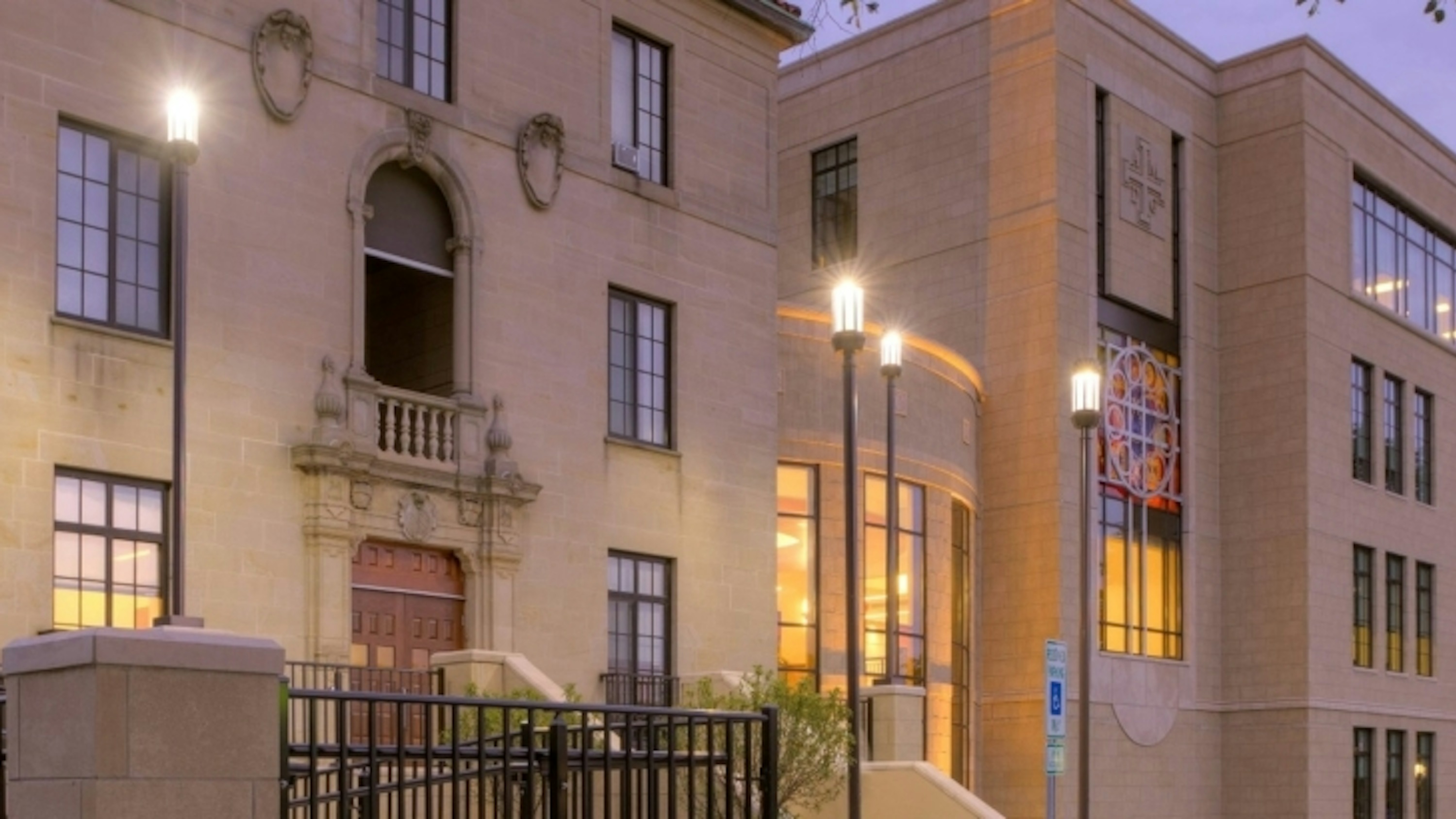
In August 2016, the University of Detroit Jesuit High School and Academy, one of the oldest schools in Detroit, opened its new Science and Engineering Center, designed through a collaborative, inclusive process by Wold Architects and Engineers.
Since its beginning in 1877, the private boys’ school has presented a traditional architectural persona to the world in keeping with its Jesuit foundations. Spectacular Spanish Colonial Revival style buildings with ornate stonework ground the campus in that history. Today, the school is committed to aligning learning environments with a hands-on, STEM focused curriculum. In order to ensure leadership in science and engineering education, however, the school needed a facility that looked to the future. “An early priority during design was to integrate the new addition seamlessly with the established context of the campus,” said Dan Kritta, AIA, LEEP AP.
“Wold has a deep appreciation for historic buildings and institutional heritage, so we did not want to disrupt the expectation of respecting the past. We borrowed cues from the original materials and carried some style elements into the new building. We were also inspired by the traditional detailing on campus, which steered design decisions toward modern interpretations. For instance, window detailing and interior tile patterns exceed the typical complexity of today’s school buildings. Those rich, iconographic details create a sense of continuity and belonging on the campus.”
The new, four-story, 40,000 square foot building doubles the dedicated spaces for the biology, chemistry, and physics curriculum. The Robotics Lab, CAD Lab, Writing Lab, diverse break-out spaces and flexible classrooms are infused with technology, fully equipping the school to lead the region in STEM education. A two-story assembly area allows multiple viewpoints to active fabrication of student projects, like the school’s award-winning eco-car. Transparency into learning settings generates curiosity of passing students and optimizes daylight infiltration. In addition, Wold upgraded neighboring portions of the historic structures to create a secure, but welcoming, school entrance and efficient administration and counseling suites.
“There are certain buildings, because of their design, materials and history, that simply cannot be replicated. However, because of operational costs, safety concerns, space constraints and pedagogical shifts, school leaders are taking a hard look at their historic buildings. When it makes sense to preserve aging facilities, Wold teams with clients to find strategic ways to modernize the places children learn.”
Wold’s expertise in responsive learning environments supports the needs of next-generation students by bringing tradition, form and function into a new era. As the University of Detroit Jesuit High School exemplifies, the past and present can coexist in preparing students for a positive future.